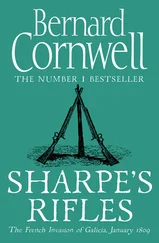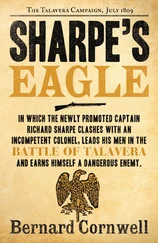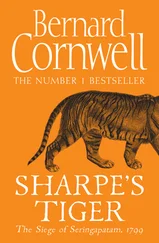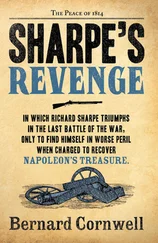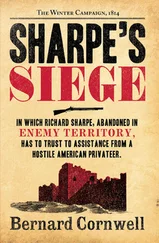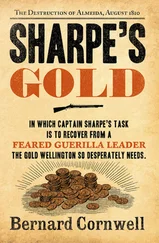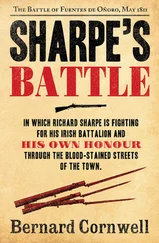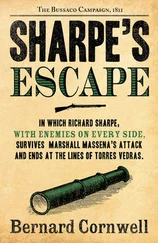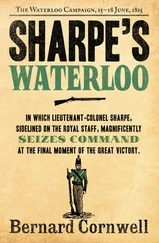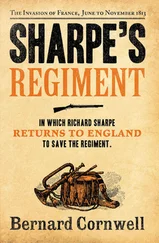SHARPE’S
RIFLES
Richard Sharpe and the French Invasion
of Galicia, January 1809
BERNARD CORNWELL

 Copyright
Copyright
This novel is a work of fiction. The incidents and some of the characters portrayed in it, while based on real historical events and figures, are the work of the author’s imagination.
Published by HarperCollins Publishers Ltd
1 London Bridge Street
London SE1 9GF
www.harpercollins.co.uk
First published in Great Britain by Collins 1988
Previously published in paperback by Fontana 1989
Copyright © Rifleman Productions Ltd 1988
Map © John Gilkes 2011
Bernard Cornwell asserts the moral right to be identified as the author of this work
A catalogue record for this book is available from the British Library
All rights reserved under International and Pan-American Copyright Conventions. By payment of the required fees, you have been granted the non-exclusive, non-transferable right to access and read the text of this ebook on-screen. No part of this text may be reproduced, transmitted, downloaded, decompiled, reverse engineered, or stored in or introduced into any information storage and retrieval system, in any form or by any means, whether electronic or mechanical, now known or hereinafter invented, without the express written permission of HarperCollins ebooks
HarperCollins Publishers has made every reasonable effort to ensure that any picture content and written content in this ebook has been included or removed in accordance with the contractual and technological constraints in operation at the time of publication
Source ISBN: 9780006176978
Ebook Edition © JULY 2009 ISBN: 9780007338733
Version: 2017-05-06
Sharpe’s Rifles is for Carolyn Ryan
‘Sharpe is the epitome of a nineteenth-century, romantic working-class hero. Cool, flash and fragrant … Escape and enjoy’
Daily Express
Cover
Title Page SHARPE’S RIFLES Richard Sharpe and the French Invasion of Galicia, January 1809 BERNARD CORNWELL
Copyright Copyright This novel is a work of fiction. The incidents and some of the characters portrayed in it, while based on real historical events and figures, are the work of the author’s imagination. Published by HarperCollins Publishers Ltd 1 London Bridge Street London SE1 9GF www.harpercollins.co.uk First published in Great Britain by Collins 1988 Previously published in paperback by Fontana 1989 Copyright © Rifleman Productions Ltd 1988 Map © John Gilkes 2011 Bernard Cornwell asserts the moral right to be identified as the author of this work A catalogue record for this book is available from the British Library All rights reserved under International and Pan-American Copyright Conventions. By payment of the required fees, you have been granted the non-exclusive, non-transferable right to access and read the text of this ebook on-screen. No part of this text may be reproduced, transmitted, downloaded, decompiled, reverse engineered, or stored in or introduced into any information storage and retrieval system, in any form or by any means, whether electronic or mechanical, now known or hereinafter invented, without the express written permission of HarperCollins ebooks HarperCollins Publishers has made every reasonable effort to ensure that any picture content and written content in this ebook has been included or removed in accordance with the contractual and technological constraints in operation at the time of publication Source ISBN: 9780006176978 Ebook Edition © JULY 2009 ISBN: 9780007338733 Version: 2017-05-06
Dedication Sharpe’s Rifles is for Carolyn Ryan
Epigraph ‘Sharpe is the epitome of a nineteenth-century, romantic working-class hero. Cool, flash and fragrant … Escape and enjoy’ Daily Express
Map
Prologue
Chapter One
Chapter Two
Chapter Three
Chapter Four
Chapter Five
Chapter Six
Chapter Seven
Chapter Eight
Chapter Nine
Chapter Ten
Chapter Eleven
Chapter Twelve
Chapter Thirteen
Chapter Fourteen
Chapter Fifteen
Chapter Sixteen
Chapter Seventeen
Chapter Eighteen
Keep Reading
Historical Note
Sharpe’s Story
About the Author
The SHARPE Series (in chronological order)
The SHARPE Series (in order of publication)
Also by Bernard Cornwell
About the Publisher
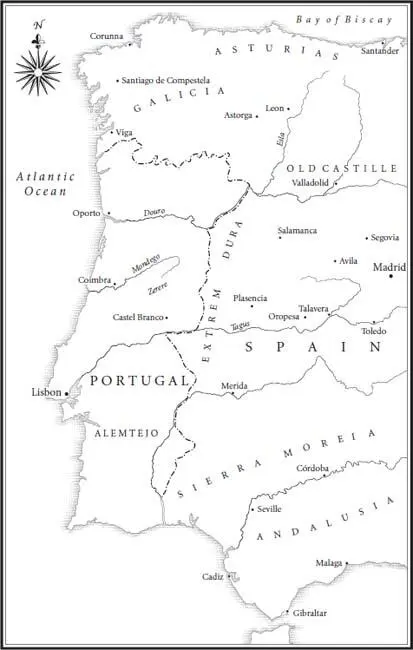

The prize was a strongbox.
A Spanish Major was struggling to save the box, while a chasseur Colonel of Napoleon’s Imperial Guard had been ordered to capture it. The Frenchman had been unleashed to the task; told that he could destroy or kill whatever or whoever tried to obstruct him.
The strongbox itself was a chest made of a wood so old that it appeared as black and shiny as coal. The wood was bound with two iron bands that, though pitted with ancient rust, were still strong. The old chest was two feet long, eighteen inches wide, and as many inches high. It was locked with two hasps that were fastened with brass padlocks. The joint between the humped lid and the chest was sealed with red seals, some of them so old that they were now little more than wisps of wax imbedded in the grain of the ancient wood. An oilcloth had been sewn around the strong box to protect it from the weather, or rather to protect the fate of Spain that lay hidden inside.
On the second day of 1809 the chasseur Colonel almost captured the strongbox. He had been given a Regiment of French Dragoons and those horsemen caught up with the Spaniards close to the city of Leon. The Spaniards only escaped by climbing into the high mountains where they were forced to abandon their horses, for no horse could climb the steep, ice-slicked tracks where Major Blas Vivar sought refuge.
It was winter, the worst winter in Spanish memory, and the very worst time to be in the northern Spanish mountains, but the French had given Major Vivar no choice. Napoleon’s armies had taken Madrid in December, and Blas Vivar had fled with the strongbox just one hour before the enemy horsemen had entered the capital. He had ridden with one hundred and ten Cazadores; the mounted ‘hunters’ who carried a straight-bladed sword and a short-barrelled carbine. But the hunters had become the hunted as, in a nightmare journey across Spain, Vivar had twisted and turned to avoid his French pursuers. He had hoped to find safety in General Romana’s northern army, but, only two days before the Dragoons forced them into the hills, Romana was defeated. Vivar was alone now, stranded in the mountains, with just ninety of his men left. The others had died.
They had died for the strongbox which the survivors carried through a frozen countryside. Snow thickened in the passes. When there was a thaw it only came in the form of rain; a pelting, relentless rain that turned the mountain paths into mud which froze hard in the long nights. Frostbite decimated the Cazadores. In the worst of the cold the survivors sheltered in caves or in high deserted farmsteads.
Читать дальше
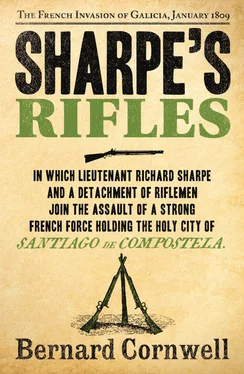

 Copyright
Copyright

